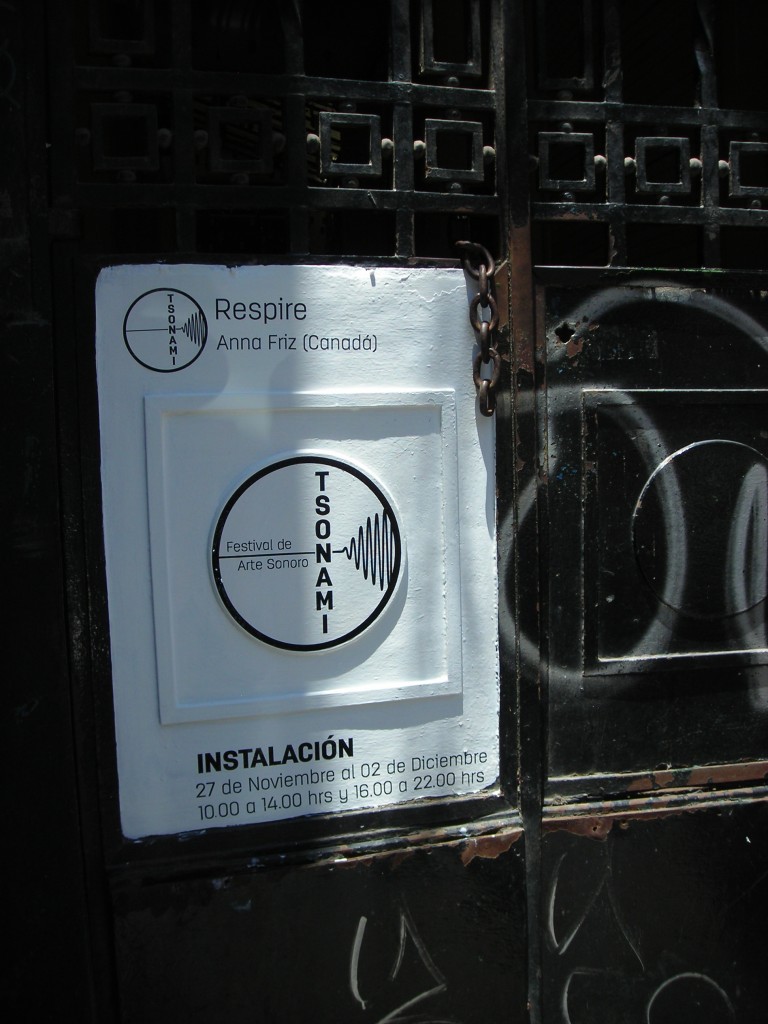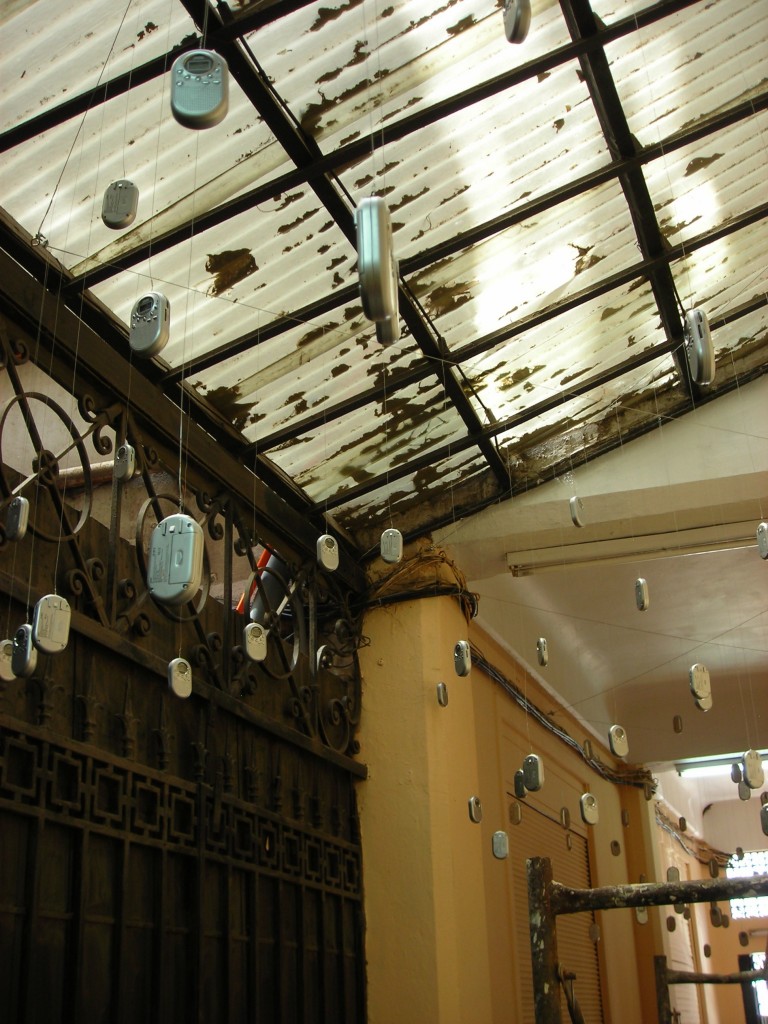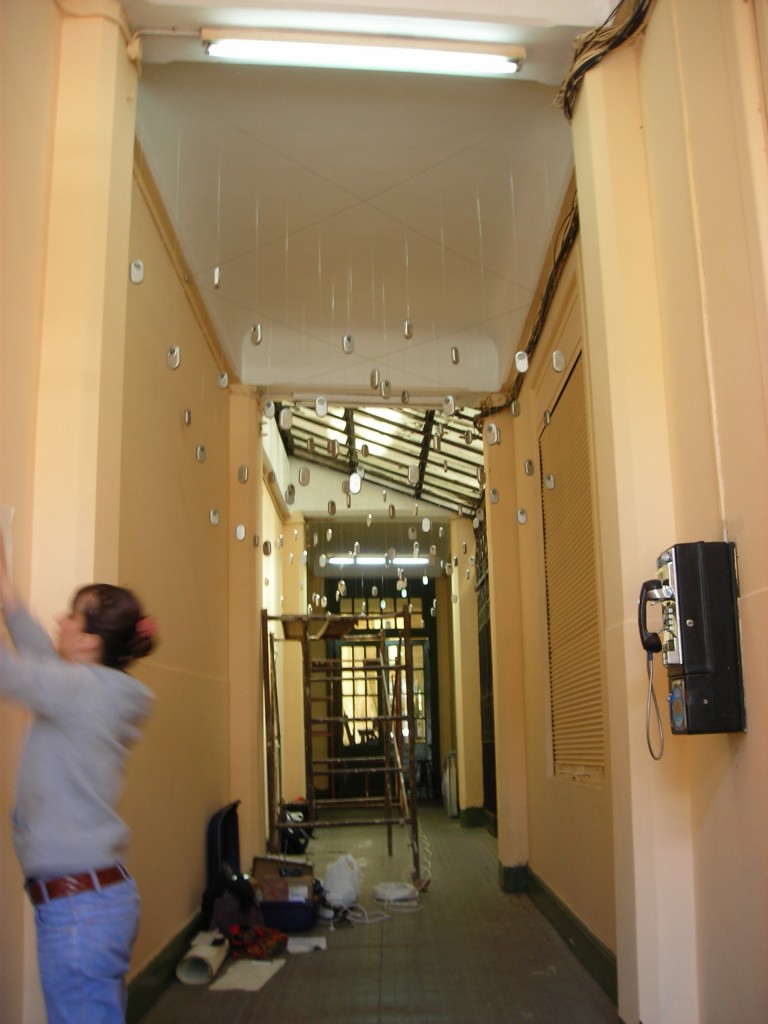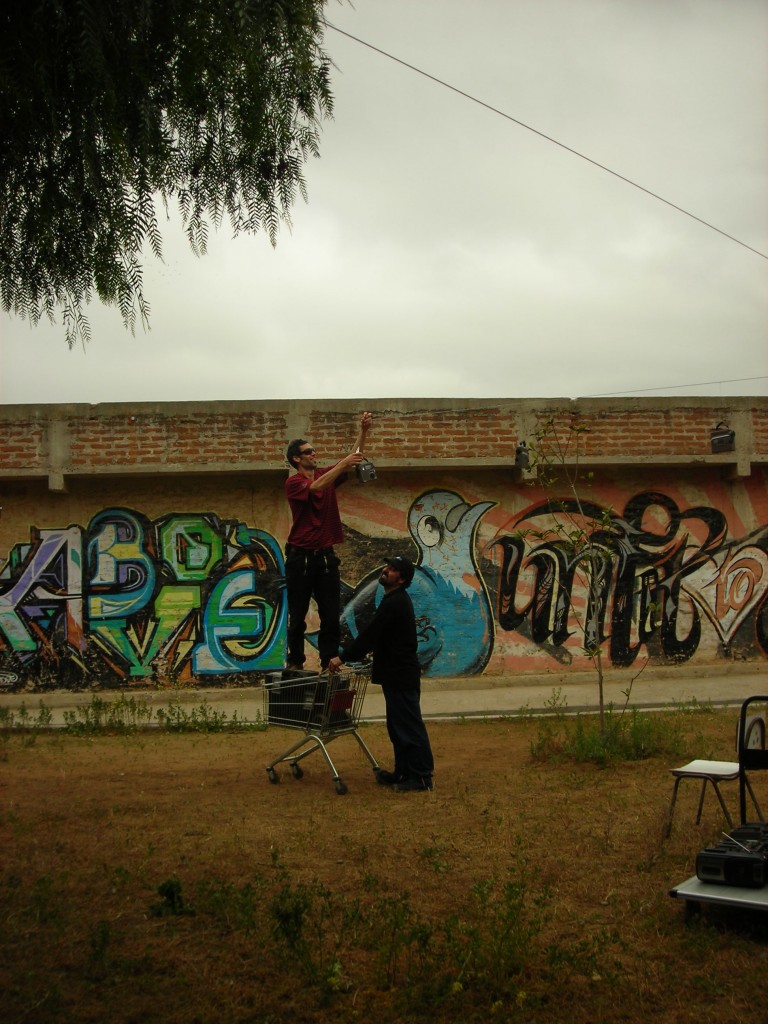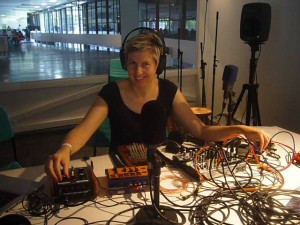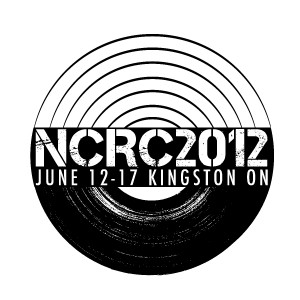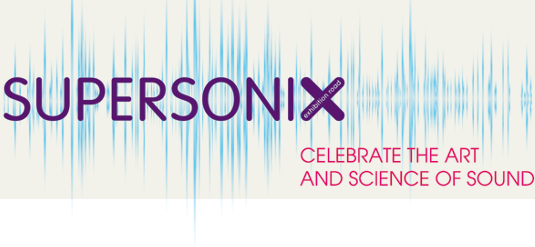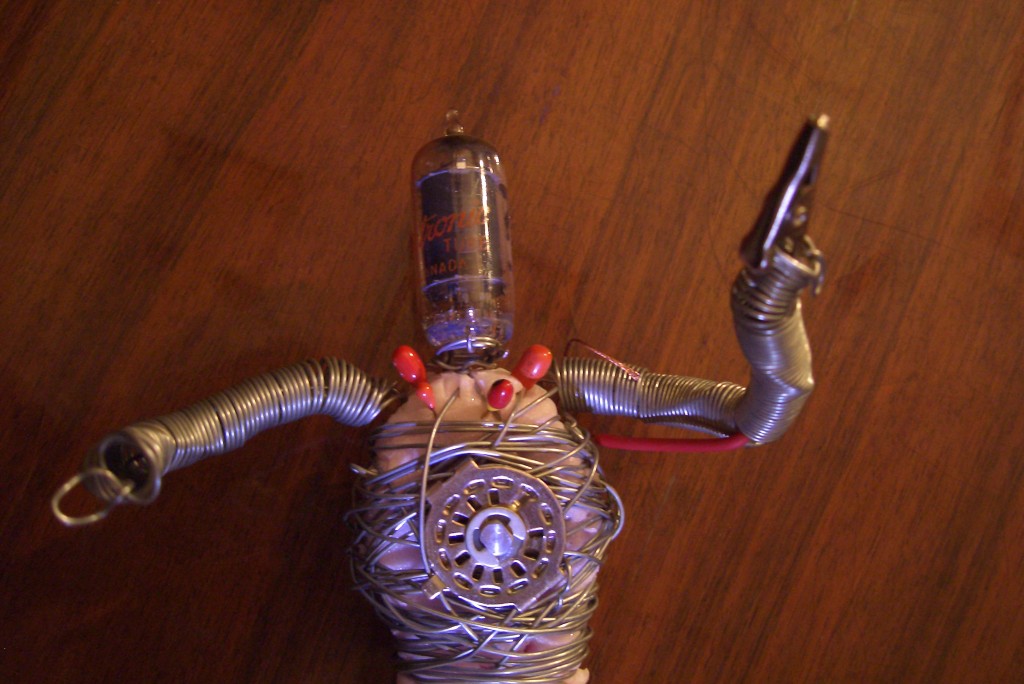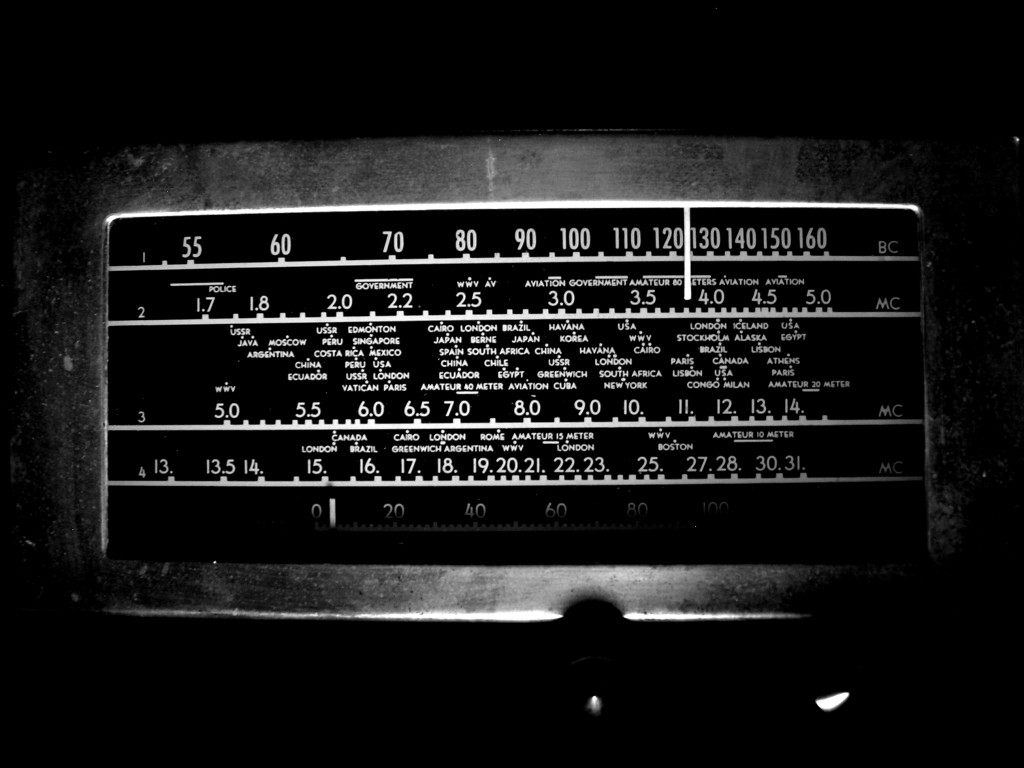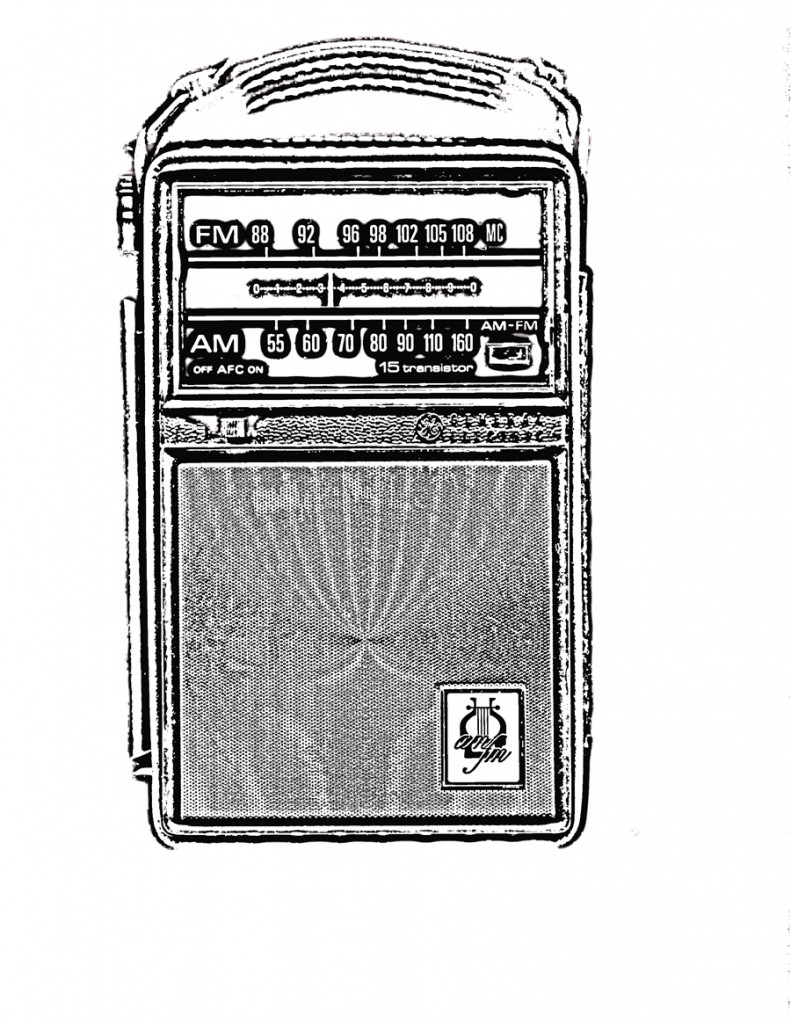November 29th, 2012
Gone south, with radios
I’ve packed up my radios, and taken them on the road to Valparaiso Chile, for installation and performance at the Tsonami Festival de Arte Sonoro 2012. Many thanks to the whole Tsonami team here, for putting on a really generous event with a great community spirit!
Respire is remounted here as a 3-frequency piece, located in the corridor of the lower access to Ascensor El Peral (there are many ascensors here, which are a kind of outdoor elevator that make it easier to scale the steep hills of Valpo). The radios sway in the Pacific breeze, and chuff and stutter at one another as the fog rolls in to town in the evening. More photos to come soon, but here are a couple from the install, where I had help from an excellent group of installers, including Claudia, Paula (a bit blurry in action in the bottom photo) and head tech for the festival Rodrigo Ríos Zunino:
The piece is open daily November 26 – December 2, 2012, 10h-14h, 16h-22h.
I played the opening night of the festival at the Parque Cultural Valparaiso on Tuesday November 27, 20h. In addition to two stereo pairs of speakers, I also fired up the big transmitter to send to 20 radios suspended over the audience. Two more techie Rodrigos hung them all with the help of a shopping cart…. not pictured is the imperious little black and white feral cat who also followed them around.
Also this week, a new radio piece (50 minutes) unifying some of all the radio and timekeeping projects I’ve been working on for the past two years. It’s called Collecting clocks and losing time, and aired on Monday November 26 at 23h on Radio Valentín Letelier here in Valparaiso on 97.3FM/ 940AM. Here’s a little description:
Once upon a time there was a house on the countryside which housed a hundred clocks. Once upon a time the clocks in every house ran on their own time, and all the trains and hotels and shops had their own time. Once upon a time the time was made universal, divided into zones, and propagated around the globe: it was known as Mean Time. Once upon a time there were microwaves fired at a cesium-12 isotope, and the rate of electron loss dictated the most standardized time of all. Still there were digital devices that did not understand which time zone they lived in. Still everyone was late. Still the clocks began to slowly drag the seconds and minutes and hours behind them. Once upon a time the clocks burned in a fire. Now there are only five that remain.
Finally, I’m joining 3 other artists from the festival to give a short talk on Thursday, November 29, 17h, also at the Parque Cultural Valparaiso; mine perhaps predictably about radio, radio art, and everyday practice.
